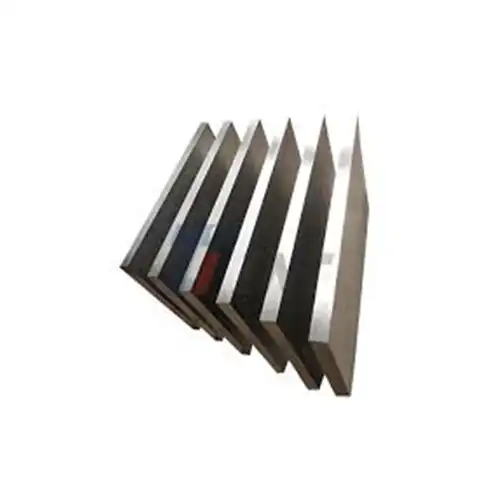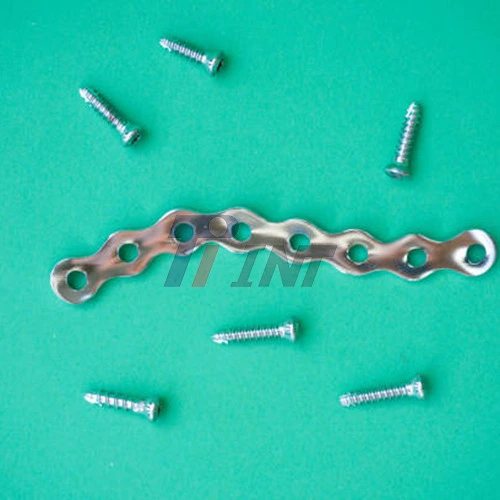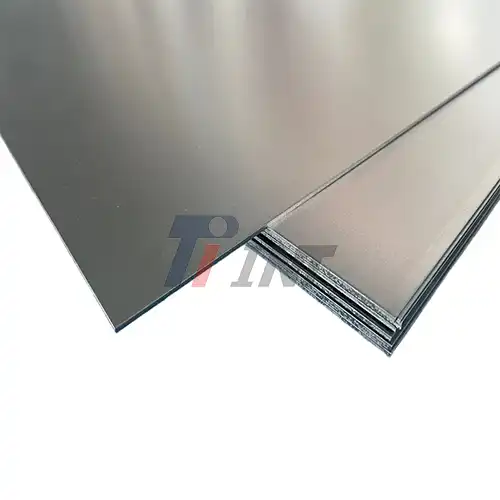The Science Behind Titanium Plates in Clavicle Fracture Treatment
Biomechanical Advantages of Titanium Plates
Titanium plates offer exceptional biomechanical properties that make them highly effective in treating clavicle fractures. The high strength-to-weight ratio of titanium allows for the creation of plates that are both robust and lightweight. This unique combination ensures that the plate can withstand the forces exerted on the clavicle during daily activities while minimizing the additional burden on the patient's shoulder.
Moreover, the flexibility of titanium plates plays a crucial role in promoting optimal healing. Unlike rigid stainless steel plates, titanium plates have a degree of elasticity that more closely mimics the natural properties of bone. This elasticity allows for micro-movements at the fracture site, which has been shown to stimulate bone formation and accelerate the healing process.
Biocompatibility and Osseointegration
One of the most significant advantages of titanium plates, including titanium plate clavicle fracture, in clavicle fracture treatment is their excellent biocompatibility. Titanium has a remarkable ability to integrate with living tissue without causing adverse reactions or rejection. This property, known as osseointegration, allows the bone to grow directly onto the surface of the titanium plate, creating a strong and stable interface between the implant and the surrounding tissue.
The process of osseointegration begins almost immediately after the titanium plate is implanted. Osteoblasts, the cells responsible for bone formation, adhere to the titanium surface and begin depositing new bone material. Over time, this results in a seamless integration of the plate with the clavicle, providing long-term stability and support.
Corrosion Resistance and Long-Term Stability
Titanium's exceptional corrosion resistance is another factor that contributes to its effectiveness in clavicle fracture treatment. When exposed to oxygen, titanium forms a thin, protective oxide layer on its surface. This layer prevents further oxidation and degradation of the material, ensuring the longevity and stability of the implant.
The corrosion resistance of titanium plates is particularly important in the context of clavicle fractures, as the shoulder area is constantly exposed to moisture and various bodily fluids. By resisting corrosion, titanium plates maintain their structural integrity over time, providing consistent support to the healing bone and minimizing the risk of implant failure or complications.
Advanced Features of Modern Titanium Plate Designs
Customizable Sizes and Shapes
Modern titanium plate clavicle fracture fixation systems offer a range of customizable options to suit individual patient needs. Orthopedic surgeons can choose from various plate sizes and shapes to ensure an optimal fit for each unique fracture pattern and clavicle anatomy. This customization allows for more precise alignment of the fractured bone segments and improved stability at the fracture site.
Some advanced titanium plate designs incorporate pre-contoured shapes that closely match the natural curvature of the clavicle. These anatomically shaped plates reduce the need for intraoperative bending and contouring, potentially decreasing surgical time and improving the overall fit of the implant.
Low-Profile and Minimally Invasive Designs
In recent years, there has been a trend towards low-profile titanium plate designs for clavicle fracture fixation. These thinner plates minimize soft tissue irritation and reduce the likelihood of the implant being palpable or visible under the skin. Low-profile designs are particularly beneficial for patients with thin skin or limited soft tissue coverage over the clavicle.
Additionally, some titanium plate systems are designed to be implanted using minimally invasive techniques. These approaches involve smaller incisions and less soft tissue dissection, potentially leading to reduced postoperative pain, faster recovery times, and improved cosmetic outcomes.
Enhanced Screw Fixation Mechanisms
The effectiveness of titanium plates in clavicle fracture treatment is further enhanced by advanced screw fixation mechanisms. Many modern plate designs incorporate locking screw technology, which allows the screws to lock directly into threaded holes in the plate. This creates a fixed-angle construct that provides superior stability, particularly in osteoporotic bone or comminuted fractures.
Some titanium plate systems also feature variable-angle locking screws, which allow surgeons to adjust the screw trajectory within a certain range while still maintaining the benefits of locking fixation. This flexibility can be particularly useful when navigating around complex fracture patterns or addressing specific anatomical variations.
Clinical Outcomes and Patient Benefits
Accelerated Healing and Reduced Complication Rates
Numerous clinical studies have demonstrated the efficacy of titanium plate clavicle fracture fixation in promoting faster healing and reducing complication rates. The stable fixation provided by titanium plates allows for early mobilization of the shoulder, which can help prevent stiffness and promote a quicker return to normal function.
Research has shown that patients treated with titanium plate fixation for displaced clavicle fractures experience significantly shorter time to union compared to those treated non-operatively. Moreover, the risk of non-union or malunion is substantially reduced with titanium plate fixation, leading to better long-term outcomes and a lower likelihood of revision surgery.
Improved Functional Recovery and Patient Satisfaction
The use of titanium plates in clavicle fracture treatment has been associated with improved functional recovery and higher levels of patient satisfaction. Patients treated with titanium plate fixation typically report less pain and discomfort during the recovery process compared to those managed non-operatively.
Furthermore, the stable fixation provided by titanium plates allows for a more predictable and controlled rehabilitation process. This enables patients to regain shoulder strength and range of motion more quickly, facilitating a faster return to work and daily activities. Many patients also appreciate the improved cosmetic outcome associated with titanium plate fixation, as it helps maintain the normal contour of the clavicle and reduces the risk of visible deformity.
Long-Term Durability and Reduced Need for Implant Removal
The exceptional durability and biocompatibility of titanium plates contribute to their long-term success in clavicle fracture treatment. Unlike some other implant materials, titanium plates rarely need to be removed once the fracture has healed. This eliminates the need for a second surgery and its associated risks and costs.
In cases where implant removal is desired or necessary, the process is typically straightforward due to the corrosion-resistant nature of titanium. The plates and screws remain easily identifiable and removable, even after years of implantation, further highlighting the long-term benefits of choosing titanium for clavicle fracture fixation.
Conclusion
Titanium plates have undoubtedly transformed the treatment landscape for clavicle fractures, with titanium plate clavicle fracture offering a combination of biomechanical superiority, biocompatibility, and durability that accelerates healing and improves patient outcomes. As technology continues to advance, we can expect further innovations in titanium plate design and application, potentially leading to even better results in the management of clavicle fractures.
For those seeking high-quality titanium plates for clavicle fracture treatment or interested in learning more about the latest advancements in medical titanium products, Baoji INT Medical Titanium Co., Ltd. offers a comprehensive range of solutions. With over 30 years of experience in the research, development, and production of titanium materials, INT is at the forefront of medical titanium innovation. To explore their product offerings or discuss specific requirements, please contact them at export@tiint.com.











 2025-08-26 10:08:18
2025-08-26 10:08:18

